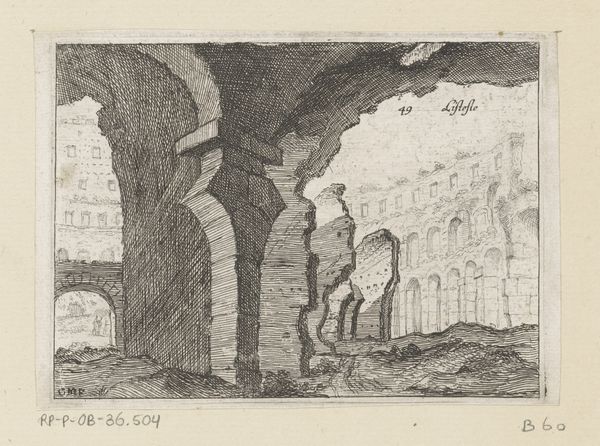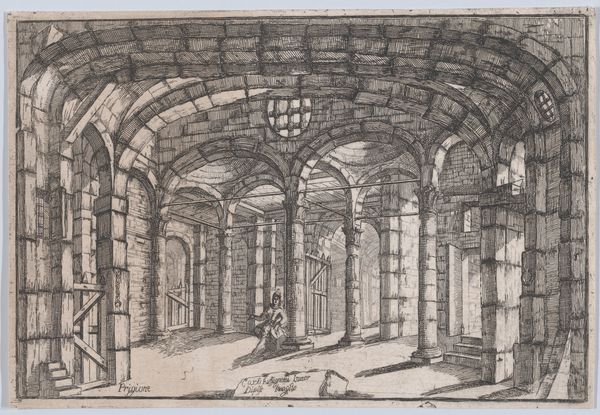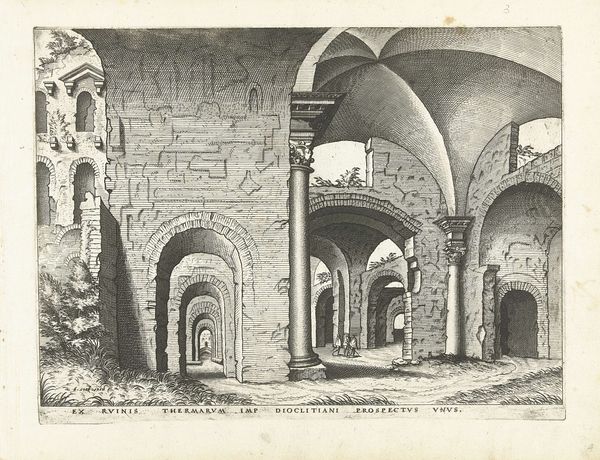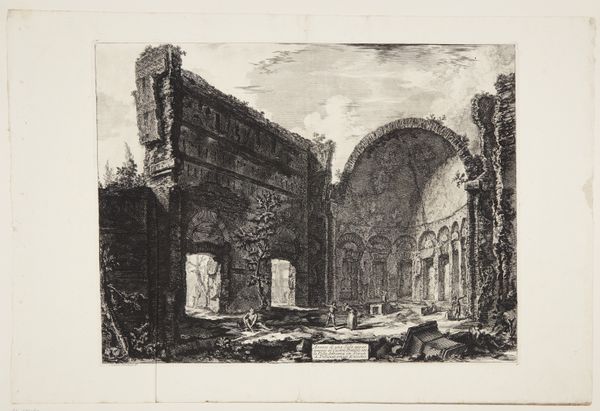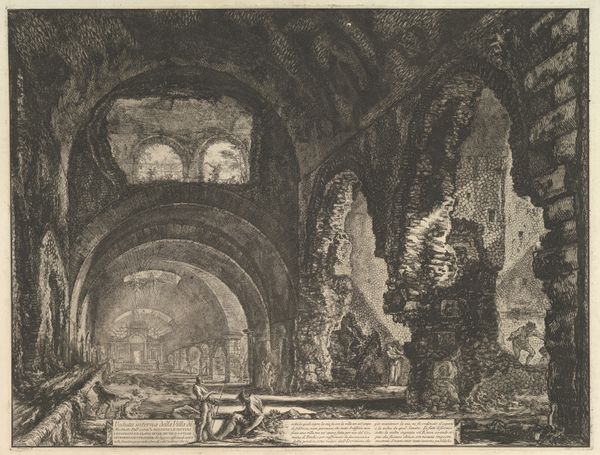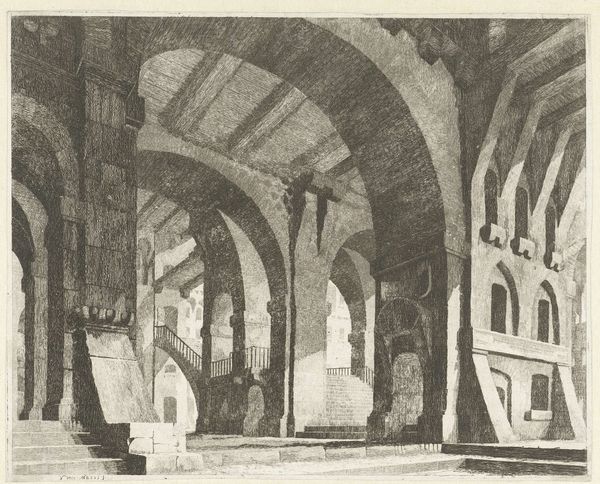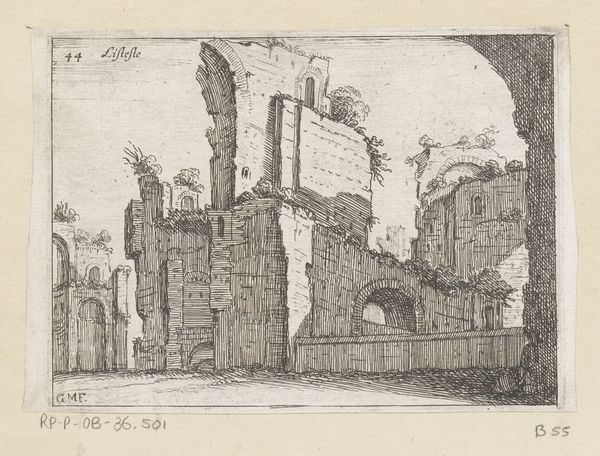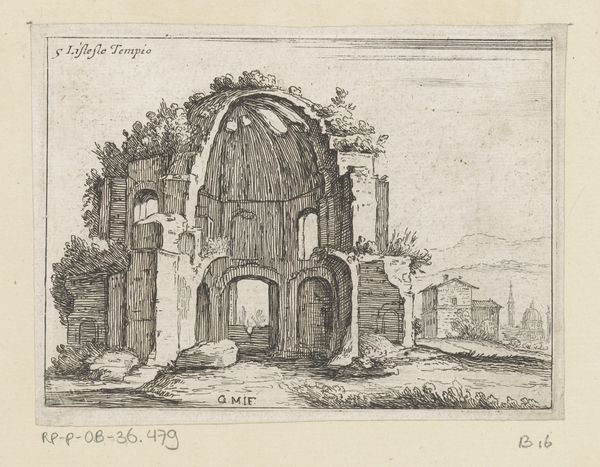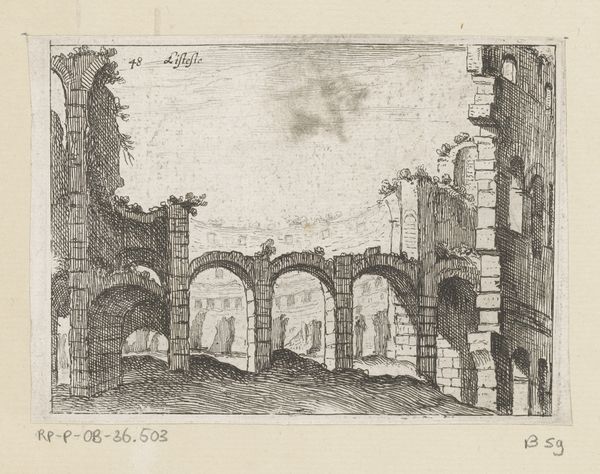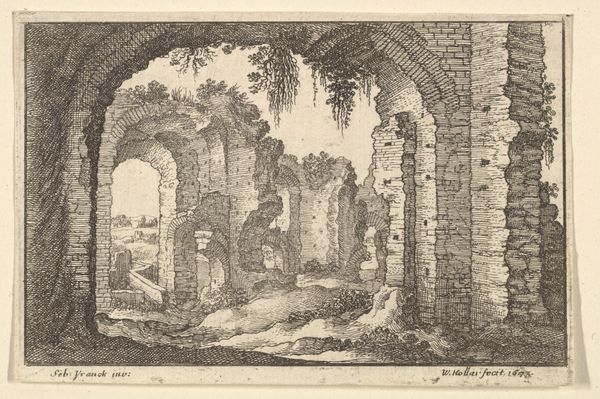
print, etching, architecture
#
aged paper
# print
#
etching
#
old engraving style
#
landscape
#
ancient-mediterranean
#
history-painting
#
italian-renaissance
#
architecture
Dimensions: height 95 mm, width 149 mm
Copyright: Rijks Museum: Open Domain
Editor: This etching, "Resten van het Colosseum te Rome," by Giovanni Battista Mercati, dates to 1629. I'm immediately struck by the contrast between the imposing architecture and its state of decay. What can you tell me about the structure and form in this work? Curator: Notice the artist’s deliberate use of line and shadow. The etching technique, with its dense, cross-hatched lines, emphasizes the texture of the stone and the play of light within the Colosseum’s ruins. Consider how the composition, employing a deep perspective, directs the viewer's gaze into the recesses of the structure. Do you perceive a formal organization at play in this portrayal of ruin? Editor: I see how the lines create depth, leading my eye toward the back. There's a pattern with the arches on both sides, yet the crumbling parts introduce some variance, preventing it from feeling too rigid. It's a balance of order and disorder. Curator: Precisely. The juxtaposition of precise architectural details and fragmented elements creates a tension that enlivens the composition. It's not simply a representational exercise but a structured arrangement intended to convey something beyond the literal. The repetitive arch form gives a visual rhythm, do you find that repetition, then rupture, adds meaning? Editor: Absolutely, the breaks in the pattern highlight the passing of time. This close analysis of line, light, and form really opens up a new dimension to the artwork. Curator: Indeed. Shifting our focus from subject to structure and composition brings deeper understanding. It prompts us to move beyond recognizing 'ruins' and delve into an intended order and the artist’s manipulation of form for an impactful statement.
Comments
No comments
Be the first to comment and join the conversation on the ultimate creative platform.
